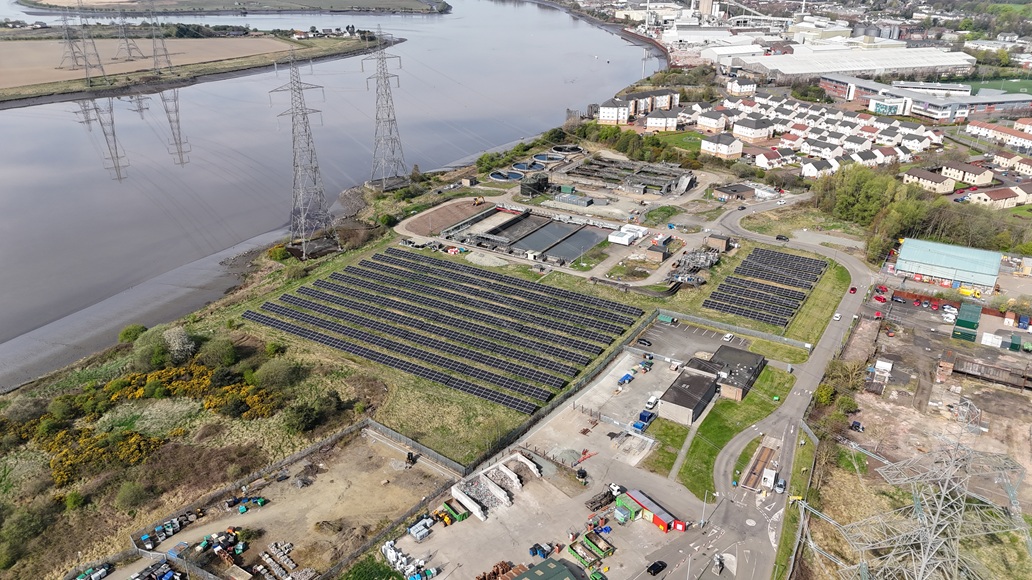£1.3m solar project powering Scottish Water site in Alloa

Almost a third of the energy needed to power a waste water treatment works (WWTW) serving thousands of people in and around Alloa is now being provided by a £1.3 million solar scheme at the site.
The project, one of the largest completed at a Scottish Water site this year, has seen 1,728 ground mounted panels installed at Alloa WWTW, which are expected to generate 0.95GWh of green energy a year.
The majority of the energy will be used on site, providing 29% of what is needed to power the works, with the rest being exported to the national grid where it can be accessed locally.
It will save around 141 tonnes of carbon dioxide equivalent each year – the same as 78 return flights from Glasgow to New York - making the waste water treatment process at the site less carbon intensive and helping Scottish Water get closer towards meeting its goal of net zero emissions by 2040.

The project has been led by Scottish Water Horizons, the publicly owned utility’s commercial subsidiary, and delivered by R&A Group.
Scottish Water horizons project manager Murdo MacAulay said: “This is one of the largest solar schemes that we have led for Scottish Water this year and it will have a very significant impact on cutting operational carbon emissions at this site while continuing to provide this vital service to customers in the local area.
“We are continuing to ramp up the pace and size of our solar programme and in the past three years, Scottish Water has installed 14.4GWh of solar energy across its sites – up from a total of 9.6GWh in the previous 12 years – which is really positive.”
Scottish Water operations team leader Jim Frail said: “We operate the waste water treatment works around the clock to ensure we are protecting the environment, which means our energy usage is significant.
“It is great that almost a third of what we need to run the works will now be created and used on site, helping reduce the amount of carbon involved in these vital processes and pushing us closer to our net zero targets.”














